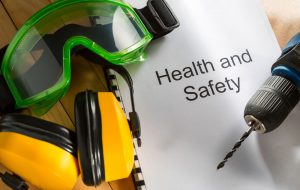Updated : February 2024
Contents
Introduction
There is a lot more to being a landlord than simply collecting the rent from tenants of the buy to let property you own. A landlord has quite a raft of responsibilities and obligations, many of which are related to the health and safety of tenants – some of which may impact on the landlord’s insurance necessary to safeguard the integrity of the property. And, some of which are designed to help maintain the standard and quality of housing within a particular local authority area.
Since most of your obligations have the force of law, it is important that they are understood before you take on the role of landlord – whether you have set out with the express purpose of running a buy to let business or whether you have become an “accidental” landlord after coming into a property which seems fit to let.
Your understanding and compliance with these responsibilities may also have an impact on the effectiveness and validity of your landlord insurance – it is why here at Cover4LetProperty we have also produced a companion guide on legislation affecting landlords.
The aim of this guide, however is to provide further information and discussion about:
- an overview of landlords’ obligations;
- gas safety;
- electrical safety;
- legionnaire’s disease; and
- the Housing Health and Safety Rating System (HHSRS).
The guide concludes with a summary and is designed to offer an overview of what you need to know.
Please note that legislation is subject to change and while the information within this guide is based on our current understanding of the subject, it should not be considered to be qualified legal advice. The legislation may also vary depending whether the property is in England, Scotland, Northern Ireland or Wales.
Landlords obligations – an overview
Official advice makes it clear that the landlord has a primary responsibility for maintaining their let property in a condition that is safe and free from health hazards.
Repairs
In pursuit of these aims, the Citizens’ Advice Bureau also points out that the landlord has a general, underlying responsibility for carrying out repairs to the property. Although a tenancy agreement may contain express terms about the range of repairs to which a landlord agrees, there are a number of responsibilities which are so basic that the landlord cannot avoid them – they are unavoidable implied terms of any tenancy agreement.
Those implied terms – enforced by the Landlord and Tenant Act 1985 – refer to the landlord’s responsibility for carrying out certain basic repairs, such as:
- those to the exterior, structure and fabric of the property – such as the roof, walls, windows and doors, drains, foundations, guttering and rainwater goods;
- repairs to toilets, baths, sinks, basins and their associated pipework; and
- gas and water pipes, electrical cables, gas fires, boilers, radiators, electric fires and other heaters that are fitted in the property.
Duty of care
A landlord has a fundamental responsibility for the health and safety of tenants – and, for that matter, tenants’ and other visitors to the property, neighbours and the public at large.
This is enshrined in the common law concept of the landlord’s duty of care – a duty to avoid any action and to take any action necessary to prevent any of these individuals from suffering an injury or having their property damaged in any way related to the let property.
If any such event, the injured party or parties may sue you for damages by way of compensation.
In cases of physical injury, in particular, these claims may reach very substantial proportions.
As your defence against such claims, the buy to let property insurance policies arranged here at Cover4LetProperty typically include at least £2 million landlords liability insurance with options to have up to £5m cover – if you are in any doubt whether this liability insurance is included in your existing policy, you might want to consult us straight away.
Specific provisions of the law
In addition to such general responsibilities and obligations, there are further statutes relating to specific aspects of the accommodation and enforced by the government’s Health and Safety Executive (HSE). Just as it is suggested, these provisions also relate to specific areas of concern for tenants’ health and safety and include:
- gas safety provisions – which are discussed in greater detail in the immediately following section of this guide;
- electrical installations and appliances need to be maintained in safe working order. Private landlords in England must make sure that all electrical installations are inspected and tested by a registered electrician with a further check at the most 5 years’ later or before if required. An EICR – an Electrical Installation Condition Report – must be provided to tenants;
- Similar rules have applied in Scotland since 2016. In Wales, HMOs require electrical certification. HMOs in England that are licenced are also required to have a certificate;
- compliance with national and local fire safety regulations – these include the Smoke and Carbon Monoxide Alarm (England) Regulations 2015, which came into force on the 1st of October 2015 and require smoke alarms to be fitted on every floor of a let property and carbon monoxide detectors installed in every room in which there is a solid fuel burner (such as an open fire or wood-burning stove); and
- there are additional regulations – principally related to fire escapes and fire doors – for purpose-built blocks of flats and for houses that have been converted into flats.
If your local authority believes there might be health and safety concerns with your property, or if your tenants ask for one, the council may decide to conduct an inspection according to the Housing Health and Safety Rating System (HHSRS) – details of which are discussed in a later section of this guide.
Gas Safety
If it has been competently installed and is regularly and efficiently maintained, your gas installation and appliances are likely to function properly and without any risk of leaks or explosion.
But the integrity of that gas system is so important and the dangers of any kind of malfunction so great, that the law imposes specific obligations on the landlords of let property.
The relevant legislation is the Gas Safety (Installation and Use) Regulations 1998 and these apply to your property if there is any gas supply or gas appliances such as cookers, gas fires, gas-fired water heaters or gas-fired central heating boilers.
The regulations require that you arrange an inspection and safety check of the complete installation – supply pipework and fittings and all appliances – a minimum of once every year. There may be cases where you may want to carry out a safety inspection is carried out more frequently if, for example, different tenants have come and gone during the year.
Naturally, the safety check must be made by a qualified gas engineer and the way of ensuring that this is the case is to refer to the Gas Safe register of certified engineers. A new certificate needs to be issued not only after the annual safety inspection, but also whenever a new gas appliance is installed or any appliance has been serviced. A copy of the certificate which the inspecting engineer issues also needs to be given to your tenants – within a period of 28 days or as soon as new tenants take up a lease.
The Gas Safe engineer’s checklist
Before issuing your gas safety certificate, the Gas Safe engineer needs to work through a set checklist to ensure that the installation is safe. This focuses not only on identifying potential faults in the system but also includes the environment in which it is operating. Briefly, the list includes:
- using any test points which have been installed to check both gas pressures in both working and standing modes;
- checking all pipework, fittings and appliances have been tightened sufficiently to prevent possible gas leaks;
- referring to the manufacturer’s data plate to ensure that the gas rate and burner pressures are correctly set;
- testing the efficiency of exhaust gas flow through the flue;
- checking the operation of the “flame failure” device;
- ensuring that the brackets for pipework and appliances are firmly and appropriately fitted;
- checking that there is adequate ventilation for any given appliance, in accordance with the manufacturer’s conditions; and
- reporting any evidence of unsafe or dangerous pipework, fittings or appliances.
Before the Gas Safe engineer is able to issue your gas safety certificate, the whole installation and all of its appliances need to pass every item on this safety checklist.
Inspection, repair and servicing
To help make sure that your system passes its annual safety check, therefore, you might want to give serious consideration to the servicing of all gas appliances – and to any gas central heating boiler or water heater in particular. If tenants raise specific complaints about the way in which any gas appliance is working or if there is the smell of gas anywhere in the let property, of course, this must be given your immediate attention.
Regular servicing by a qualified gas engineer may also help you make sure that the central heating boiler, for example, does not break down in the middle of winter, just when the tenants need it, and you face the expense of calling out for repairs when service engineers are at their busiest – and therefore most expensive.
Legionnaire’s Disease
Following changes to Health and Safety Executive (HSE) legislation, landlords now have a specific obligation in helping to prevent the spread of Legionnaire’s Disease. The principal thrust of this legislation means that landlords need to carry out a risk assessment for the Legionella bacteria and, in the light of that risk assessment to take suitable measures for its reduction and control.
These form a further part of your responsibility as a landlord to protect the health and safety of your tenants.
What is Legionnaire’s Disease?
The Legionella bacteria occur naturally in rivers and lakes but are also present in commercial and residential water systems – whether in storage tanks, in the pipework or showers and taps.
Legionnaire’s Disease is a serious lung infection, explains the NHS website. The potentially life-threatening infection caused by the bacteria develops initial symptoms which might include a high temperature or fever, mild headaches, tiredness, chills, muscle pain or a sense of confusion – many of the symptoms, in other words, that you might associate with the ‘flu.
As the infection takes hold and spreads, the symptoms become more serious, with a cough, chest pains and shortness of breath that is also associated with pneumonia.
Certain complications of the disease may lead to death, especially in those individuals most susceptible to the disease.
The risks
The risk of Legionnaire’s Disease is usually associated with larger water systems – such as those you might find in hotels, hospitals, factories or office blocks. But the Legionella bacteria may also exist in smaller, domestic systems, such as those designed to supply your tenants. Hence, the specific obligations placed on landlords to assess the risk and to take appropriate measures to control it.
The bacteria continue to be present at low temperatures but thrive and multiply in ideal conditions of between 20º and 45ºC.
Risk assessments
The good news is that the risk of Legionnaire’s Disease in normal residential water systems is really quite slight.
The National Residential Landlords Association (NRLA), for instance, suggests that there is rarely any reason why the landlord should not conduct the risk assessment his or herself, without the need for any expensive consultant. HSE requirements, might therefore be met by simply being aware of the potential problem and by taking a few simple steps to reduce the risks.
The HSE publishes guidance on these measures, which might be summarised in terms of ensuring a frequent flow and changeover of water, keeping the water clean and free of rust and other debris, preventing water stagnation points in any part of the system, avoiding those temperatures in which the Legionella bacteria thrives (20º to 45ºC) and avoiding the use of materials which also encourage the growth of the bacteria.
Special care may be taken if a property has been unoccupied for several months and the water storage systems have been left to stagnate.
In sum, therefore, it is important that you recognise your responsibility as a landlord to help prevent your tenants contracting Legionnaire’s Disease. This means that you are sufficiently conscious of the risks to carry out a risk assessment – and in the majority of cases that risk is likely to be very slight.
In any event, the measures to help control the risk are simple, straight forward and unlikely to involve great expenditure on your part.
The Housing Health and Safety Rating System (HHSRS)
The Housing Health and Safety Rating System (HHSRS) was included in provisions of the Housing Act 2004 and came into force in April 2006. It is a system used by local councils to assess whether a property is suitable to be let to tenants and that there are no hazards or dangers in doing so.
There are two main reasons why an HHSRS inspection is carried out on your let property:
- the council has inspected other properties in your area and their general standard leads them to believe that your own property may be at risk too; or
- your tenants ask for such an inspection to be carried out.
Although the HHSRS is used mostly for the assessment of private rented housing, it may also be used to assess owner occupied property too.
The Assessment
The official guidance originally issued to landlords about HHSRS runs to some 72 pages and is likely to come across as extremely complicated. First published in 2006, remains the same at time of writing (January 2024).
It might come as no surprise that a briefing paper prepared for the House of Commons in May 2016 referred to the widespread criticism with which the HHSRS continues to be met and the limited understanding of it which is shared by landlords and tenants alike. Unsurprisingly, there has been pressure for a simpler, more straight forward set of health and safety standards to be introduced.
Continuing to work according to the provisions of the Housing Act 2004, councils currently employ a risk-based assessment which considers 29 separate health and safety indicators.
Each of these potential hazards is awarded a risk assessment score of category one or category two – depending on its seriousness – by the council’s inspectors.
On the strength of the council’s assessment, you might be issued with an enforcement notice, calling for remedies for the problems and hazards identified. The responsibility falls to you as the landlord to take action on the hazards referred to in the enforcement notice.
Depending on the seriousness of the hazards identified in the HHSRS assessment the council might take any of the following actions:
- issue an enforcement notice – on which the council may subsequently check that you have carried out the required remedies and improvements;
- carry out the remedies and improvements by the council itself – and charge the cost back to you; or
- issue a stop notice, preventing you or anyone else from using all or part of the let property.
You have the right to appeal against any enforcement notice the council may issue.
Summary
When you take on the role of landlord, you also take on a number of responsibilities and obligations to safeguard the health and safety of your tenants.
Some of those obligations are clearly defined and entirely expected. Others, however, might come as a greater surprise and are less readily understood – your responsibilities for reducing the risk of Legionnaire’s Disease or the basis on which the standard of your accommodation might be assessed according to the Housing Health and Safety Rating System (HHSRS).
Your awareness of all of the responsibilities and obligations might go a long way to ensuring that you keep the right side of the law, comply with the expectations of your local council and retain responsible and contented tenants.








